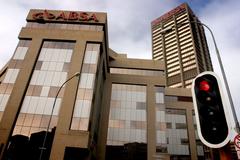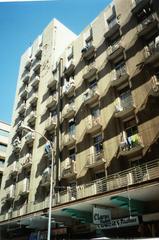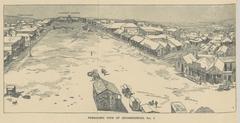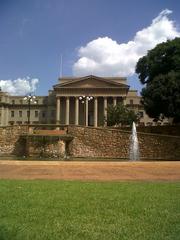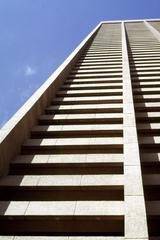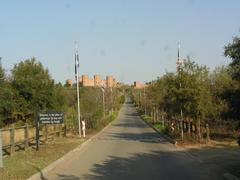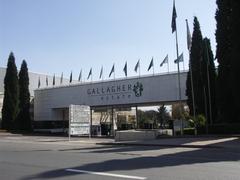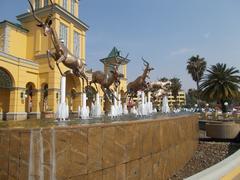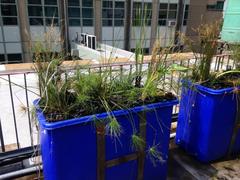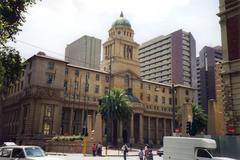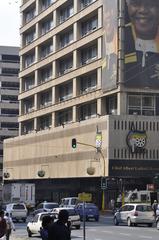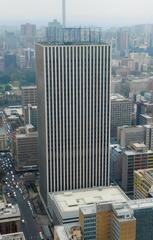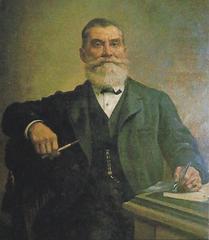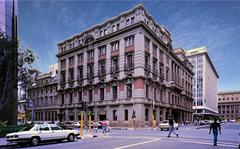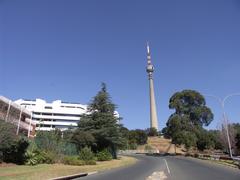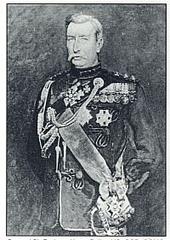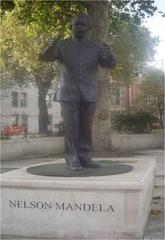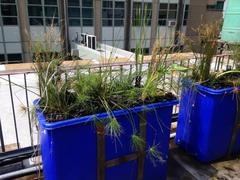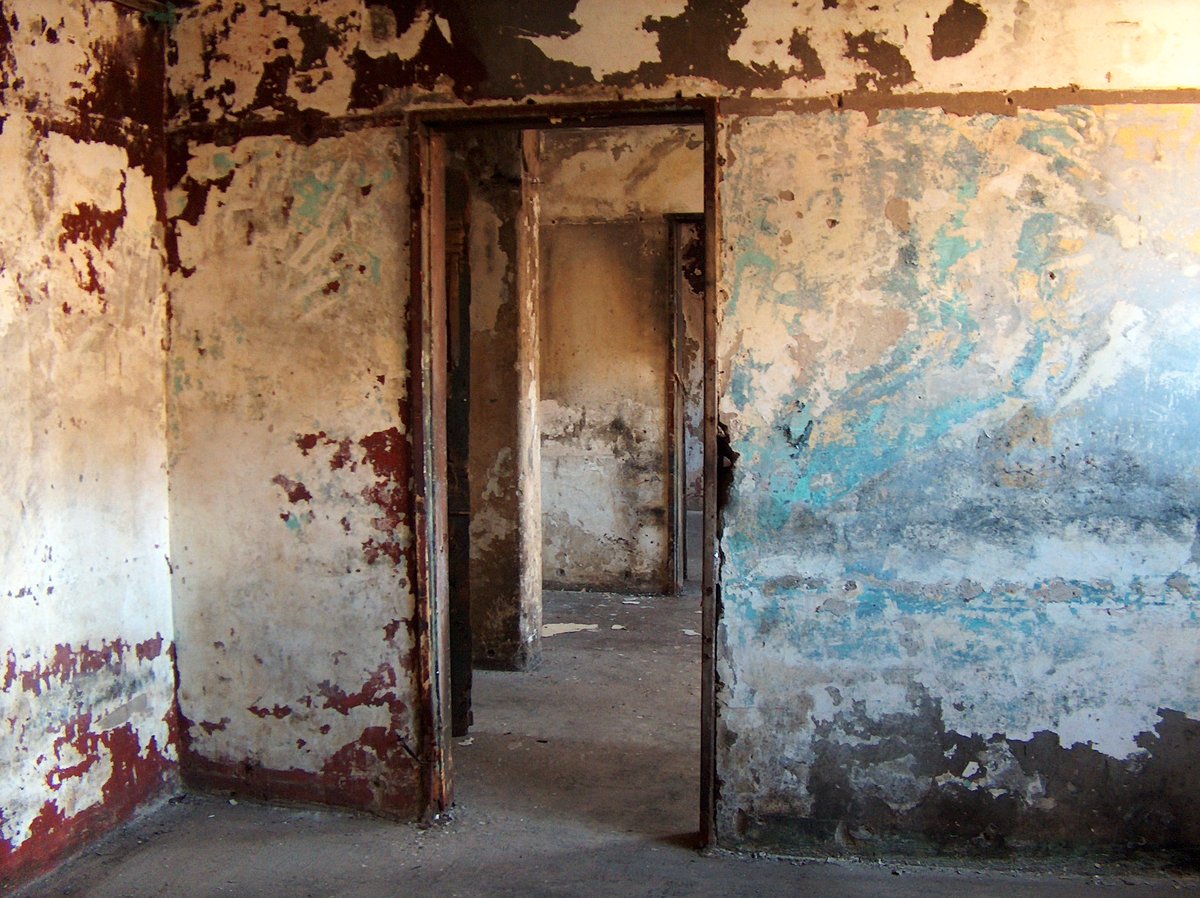
Chancellor House Johannesburg Visiting Hours, Tickets, and Historical Sites Guide
Date: 14/06/2025
Introduction
Chancellor House stands as a cornerstone of South Africa’s legal and cultural heritage. Once the law office of Nelson Mandela and Oliver Tambo, this modest building in Johannesburg’s Central Business District (CBD) played a pivotal role in the struggle against apartheid. Today, Chancellor House is a restored heritage site and museum, offering visitors a rare glimpse into the birthplace of the country’s first black law firm and the epicenter of legal resistance to oppression. Through engaging exhibits, public art, and guided tours, visitors can connect with the legacy of two of South Africa’s most revered leaders.
This comprehensive guide covers Chancellor House’s history, visiting hours, ticketing, accessibility, travel tips, nearby attractions, and more. Whether you are a history enthusiast, student, or traveler, Chancellor House provides an inspiring lens into South Africa’s journey toward justice and democracy (Evendo; Travelstart; SA-Venues).
Table of Contents
- History of Chancellor House
- Restoration and Preservation
- Visitor Information
- Museum Features and Public Art
- Travel Tips
- Nearby Attractions
- Heritage Status and Community Impact
- Frequently Asked Questions
- Conclusion and Call to Action
- References
History of Chancellor House
Origins and Legacy
Built in the late 1940s, Chancellor House became the headquarters of Mandela & Tambo Attorneys in 1952, the first black-owned law firm in South Africa. Positioned directly opposite the Johannesburg Magistrate’s Court in the multicultural Ferreirasdorp neighborhood, the firm offered legal support to black South Africans at a time when apartheid laws denied them justice. Mandela and Tambo’s practice became a beacon of hope, providing pro bono legal aid and challenging the repressive system from within the heart of Johannesburg’s legal district.
Role in the Anti-Apartheid Struggle
Chancellor House was more than an office; it was a nerve center for political activism. Mandela & Tambo Attorneys defended clients against pass laws, forced removals, and other discriminatory legislation. The firm’s proximity to the courts enabled swift legal response and symbolized a direct challenge to the apartheid regime. The building was often under surveillance, and both Mandela and Tambo faced persecution, yet their legal work laid the foundation for future reforms and the broader liberation movement (Evendo; Satori News).
Decline and Restoration
After the firm closed in 1960 due to apartheid crackdowns, Chancellor House fell into neglect. By the early 2000s, the building was derelict, with broken windows, fire damage, and occupation by squatters (Travelstart). Recognizing its historical value, the City of Johannesburg and the Johannesburg Development Agency (JDA) initiated extensive restoration in 2009. This project preserved the building’s mid-century character while transforming it into a dynamic public heritage site.
Restoration and Preservation
Architectural Features
Chancellor House’s restoration focused on authenticity:
- The yellow-brick façade was cleaned and repaired using period-appropriate materials.
- Windows and doors were replaced with replicas matching the original design.
- Parquet flooring and historic signage, including a replica “Mandela and Tambo Attorneys” sign, were installed to evoke the 1950s atmosphere.
- The ground floor was converted into a museum with exhibits visible through large street-facing windows, ensuring accessibility at all hours (Travelstart).
Heritage Status
Chancellor House is protected under South African heritage legislation and overseen by the South African Heritage Resources Agency (SAHRA). This designation ensures ongoing preservation and careful management of any future changes (Travelstart).
Visitor Information
Location and Accessibility
- Address: Corner of Fox and Gerard Sekoto Streets, Ferreirasdorp, Johannesburg CBD (SA-Venues)
- Transport: Easily accessible via car, taxi, Rea Vaya bus, or Gautrain (Park Station nearby).
- Parking: Limited during peak hours; secure, paid parking is recommended (Never Ending Footsteps).
The site is generally safe during daylight, but visitors should observe urban safety guidelines.
Visiting Hours
- Monday to Friday: 9:00 AM – 5:00 PM.
- Exhibits: Ground floor displays are visible 24/7 from the street.
- Special Events/Tours: Check the JDA website or contact the museum for updated schedules.
Tickets and Entry
- Admission: Free. No tickets required for museum or outdoor exhibits.
- Donations: Welcomed to support preservation.
- Guided Tours: Available by appointment; may have nominal fees.
Accessibility
- Ground Floor: Wheelchair accessible.
- Upper Floors: Limited access due to the building’s historic structure.
- Facilities: Restrooms are limited; plan accordingly.
For specific accessibility needs, contact the museum in advance (SA-Venues).
Museum Features and Public Art
Museum Layout
- Ground Floor: Museum displays featuring timelines, rare photographs, and narratives about Mandela & Tambo’s legal work.
- Street-Facing Windows: Allow public viewing of key exhibits at any time.
- Period Restorations: Second-floor offices restored with details matching historical photographs.
Shadow Boxer Statue
Opposite Chancellor House is the iconic “Shadow Boxer” statue by Marco Cianfanelli—a six-meter-tall steel sculpture inspired by Bob Gosani’s famous photo of Mandela boxing. The statue’s shadow is cast onto the Magistrate’s Court, symbolizing Mandela’s fighting spirit and the enduring struggle for justice (South Africa Tourism; SA-Venues).
Travel Tips
- Best Time to Visit: Weekdays during daylight hours for safety and optimal activity.
- Dress Code: Comfortable walking shoes and weather-appropriate attire (Wanderlog).
- Photography: Permitted both at the museum and Shadow Boxer statue—be mindful of other visitors and locals.
- Combining Visits: Plan to explore nearby sites like Constitution Hill and the Apartheid Museum for a comprehensive historical experience (Never Ending Footsteps).
- Accommodation: Options range from budget to luxury in Ferreirasdorp and Newtown, with 24/7 security recommended (SA-Venues).
- Contact: For tour bookings and current info, call +27 (0)11 678-3905 (SA-Venues).
Nearby Attractions
- Constitution Hill: Museum and former prison, central to South Africa’s democratic journey.
- Apartheid Museum: In-depth, interactive exhibits on apartheid history.
- Nelson Mandela’s House (Soweto): Preserved home of Mandela, offering personal insights.
- Museum Africa, Workers Museum, Newtown Precinct: Additional sites for history and culture (Never Ending Footsteps).
Heritage Status and Community Impact
Preservation and Urban Renewal
Chancellor House’s restoration is a model of heritage-led urban regeneration. It has contributed to the revitalization of the Ferreirasdorp and Maboneng areas, attracting both local and international visitors and fostering community pride (Rough Guides).
Educational and Community Role
The site offers educational programs, community events, and is included in walking tours focused on Johannesburg’s liberation history (Evendo). Proposals for future development include a legal clinic and a public law library, reinforcing Chancellor House as a living cultural hub.
Ongoing Challenges
Despite restoration, Chancellor House has faced concerns about vacancy and preservation. Heritage organizations continue to advocate for its active use and maintenance, emphasizing its importance as a symbol of justice and democracy (Satori News; Sowetan Live).
Frequently Asked Questions
Q: What are Chancellor House’s visiting hours?
A: Monday to Friday, 9:00 AM to 5:00 PM. Ground floor exhibits are visible from the street 24/7.
Q: Is there an entry fee?
A: No, entry is free. Donations are appreciated.
Q: Are guided tours available?
A: Yes, by appointment—contact the museum or local tour operators.
Q: Is Chancellor House wheelchair accessible?
A: The ground floor is accessible; upper floors have limited access.
Q: Can I take photographs?
A: Yes, photography is allowed both inside and outside.
Q: Is the area safe?
A: The CBD is generally safe during the day; remain vigilant and use standard city precautions.
Q: What else can I visit nearby?
A: Constitution Hill, Apartheid Museum, Museum Africa, and Mandela’s House in Soweto.
Conclusion and Call to Action
Chancellor House is a living testament to the courage, resilience, and vision of Nelson Mandela and Oliver Tambo. Its transformation from a neglected building to a vital heritage site mirrors South Africa’s journey from oppression to democracy. Free and accessible to all, Chancellor House is a must-visit for anyone seeking to understand the nation’s fight for justice.
Enhance your visit by downloading the Audiala app for guided tours and exclusive content. Check current hours and tour availability, explore neighboring historical sites, and support the ongoing preservation of this national treasure. Connect with the stories that shaped South Africa—and be inspired by the legacy of Chancellor House.
References and Further Reading
- Travelstart: Visiting Chancellor House Johannesburg – History, Tickets, and Travel Tips
- Evendo: Chancellor House Johannesburg – Visiting Hours, Tickets, and Historical Significance
- SA-Venues: Chancellor House Johannesburg – Heritage Guide
- Satori News: Chancellor House’s Legacy in Peril
- Rough Guides: A First-Timer’s Guide to Johannesburg
- Sowetan Live: Chancellor House After Renovation
- South Africa Tourism: Chancellor House and the Shadow Boxer Statue
- Never Ending Footsteps: Three Days in Johannesburg
- Wanderlog: Chancellor House Visitor Details
- In Your Pocket: Nelson Mandela’s Johannesburg


